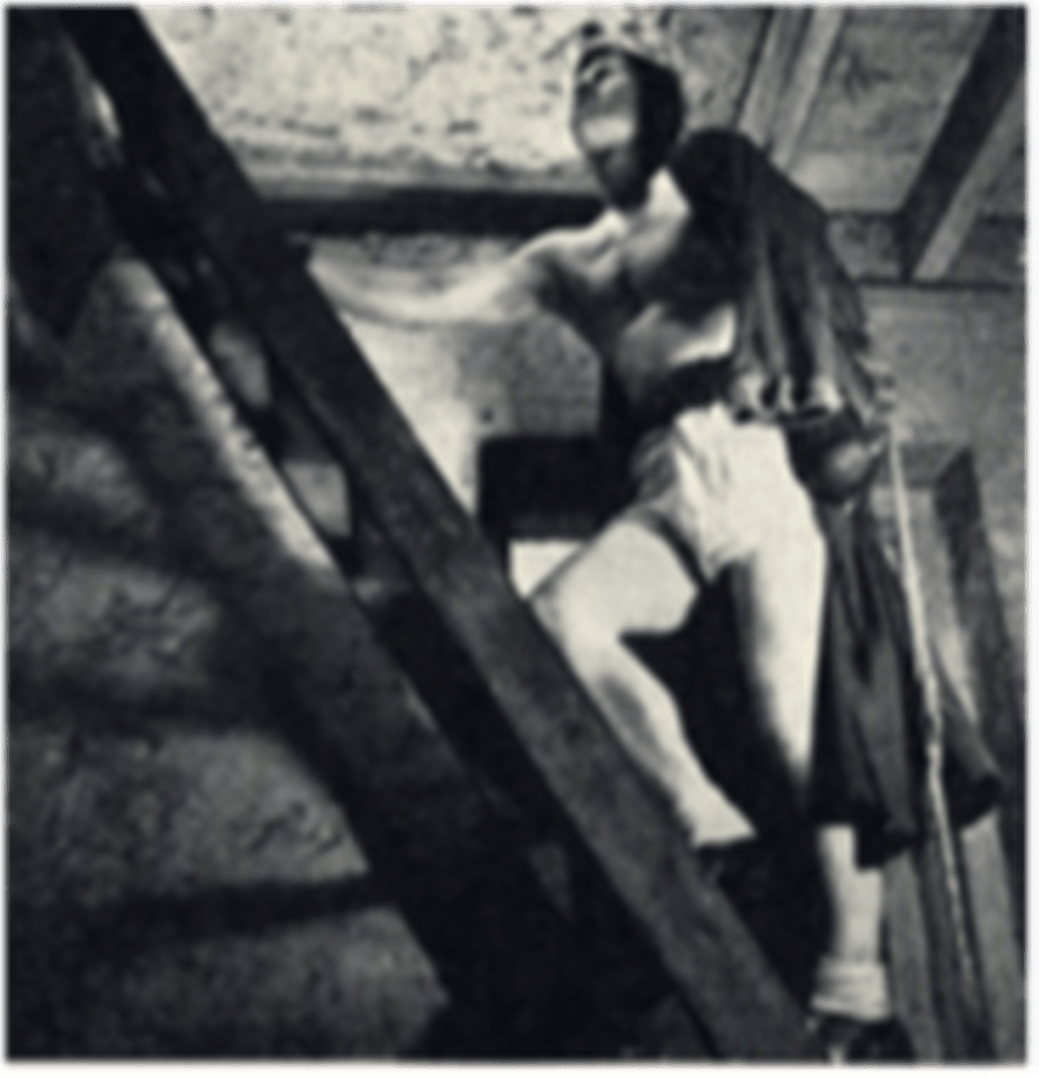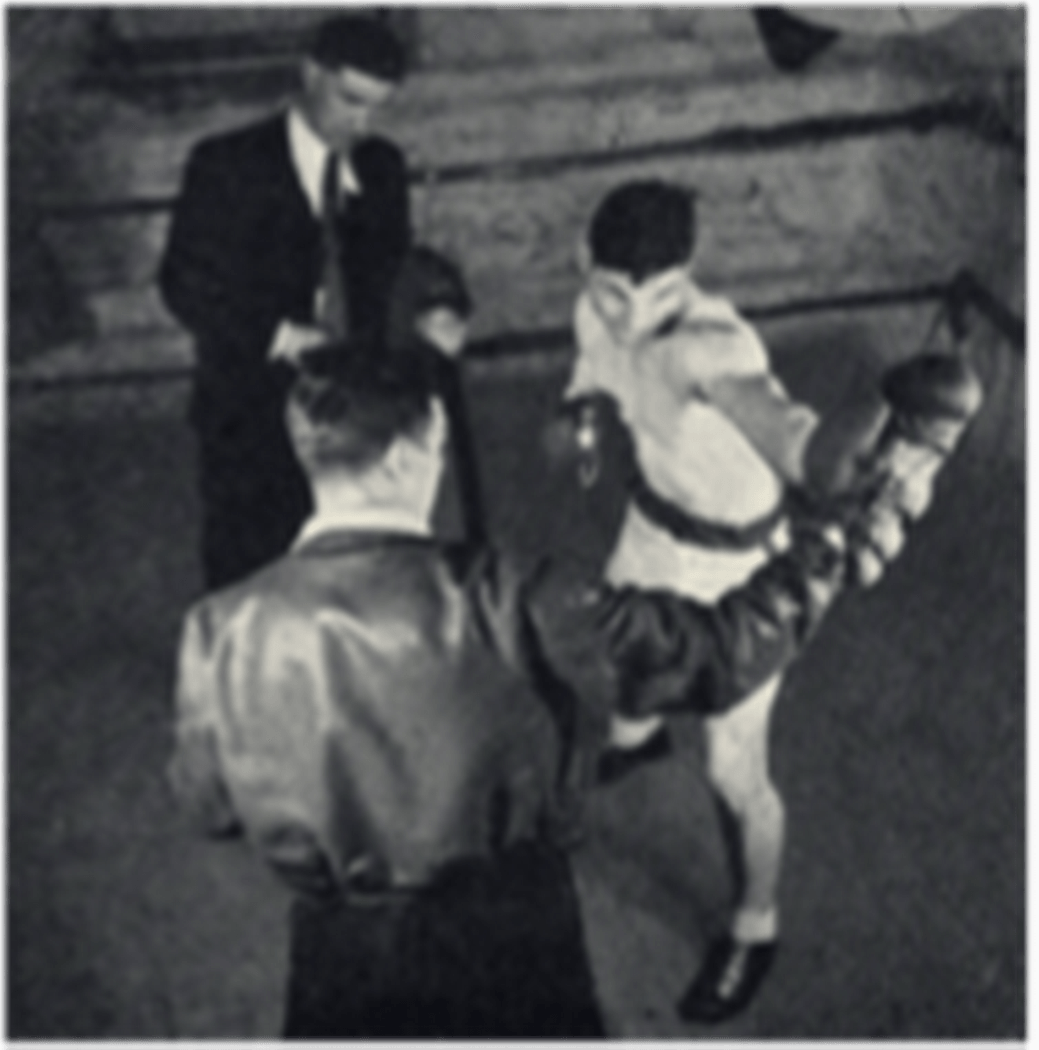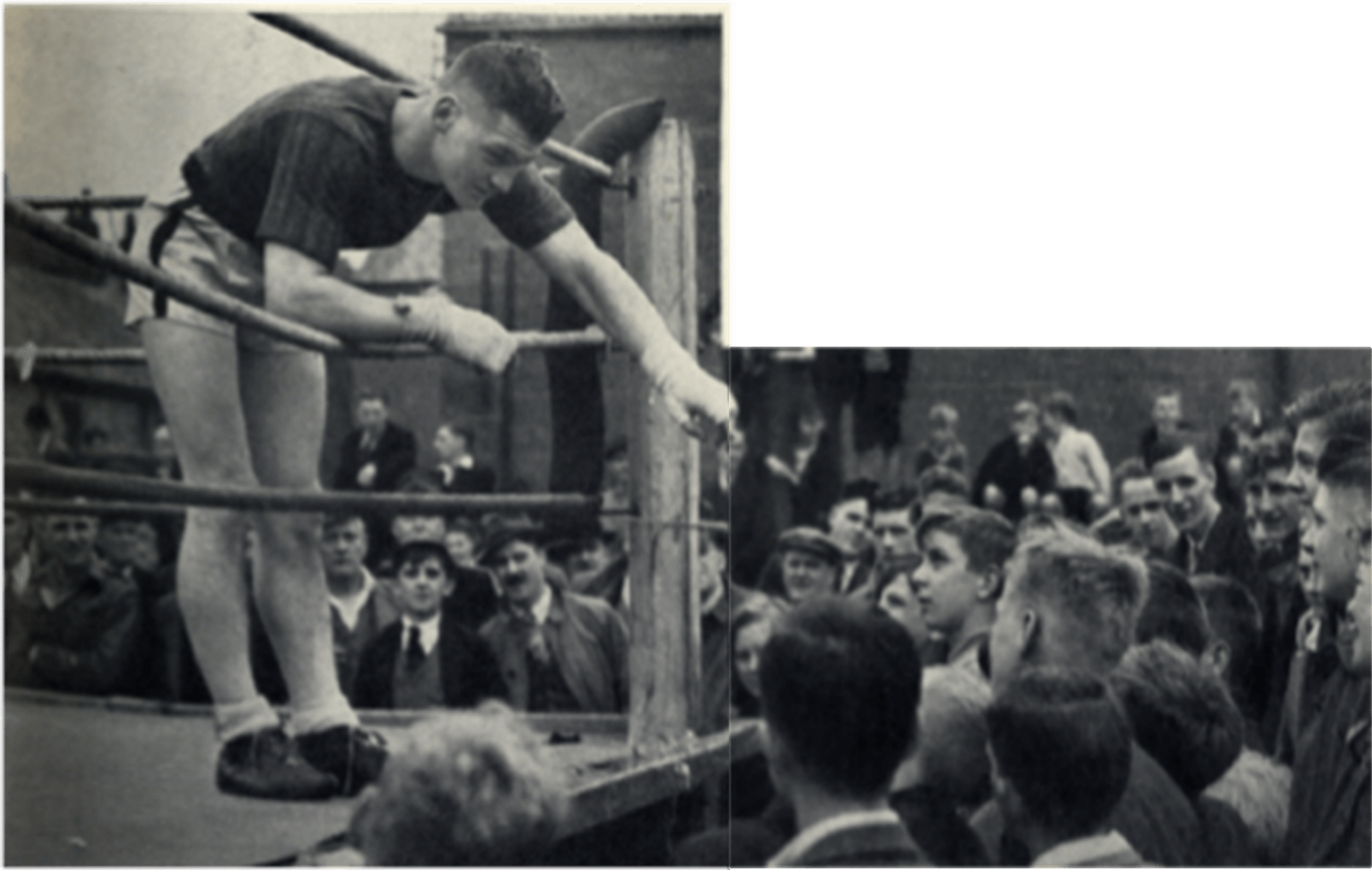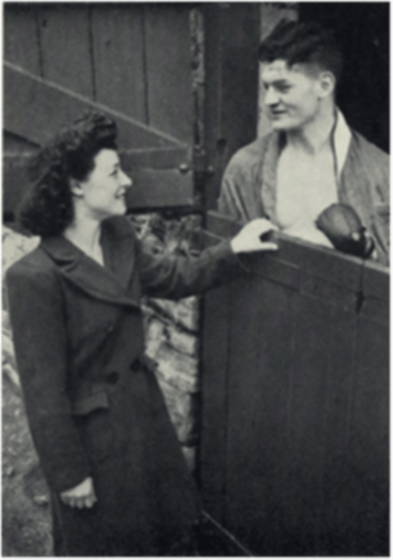
BruceWoodcockBoxer.co.uk
1943 Fight Record
| Date | Opponent | Venue | Result |
|---|---|---|---|
| 02/04/1943 | Arnold Hayes | King's Hall, Belle Vue, Manchester, UK | Won - TKO - Round 3 |
| 19/05/1943 | George Muir | Queensbury Club, Soho, London, UK | Won - TKO - Round 4 |
| 18/06/1943 | Glen Moody | King's Hall, Belle Vue, Manchester, UK | Won - TKO - Round 6 |
| 19/11/1943 | Martin Thornton | King's Hall, Belle Vue, Manchester, UK | Won - TKO - Round 2 |
| 27/12/1943 | Glen Moody | Circus Street Hall, Nottingham, UK | Won - TKO - Round 6 |
1943 - Displaced and Re-Homed
Bruce might have had fewer fights in 1943 but the pace of his finish didn’t slow down any: apart from the six round Bundy fight, none of his contests had yet gone the full distance - they hadn’t needed to! So he had to keep training hard to build up his endurance. One problem that came back to haunt him was ‘Train where?’.
Just weeks before his first fight of the year, the Ministry of Labour and national Service re-deployed Bruce back to the Plant Works in Doncaster, but since he was now a professional, he was no longer qualified to train in their excellent gym. As in the past though, Sam came to the rescue with the news that there was a pub in Doncaster with an old stables Bruce could use, and Bill Mortimer, the landlord, was happy to accommodate him. It was to remain Bruce’s training centre for over two years and saw him through to the British Empire title in 1945.
With its oblong ring because of the cramped conditions, and padding on the adjacent walls, Woodcock’s Plough gym became the stuff of local legend, the site not just of Bruce’s own development over the next few years but also the focus for a burgeoning local boxing scene.
It’s worth pausing here to give some visual impression of his life there, after the hard work Bruce, his father Sam and his brothers Billy and Malcolm put into tidying the place up.
2nd April, Woodcock vs Arnold Hayes
Bruce’s first fight of the year was against Sergeant Arnold Hayes, the Canadian Army’s heavyweight champion and former Canadian amateur light heavyweight champion. It was a cracking fight and each of them gave as much as they got until Hayes threw caution to the wind in the third round and gave Bruce the opening to put him down for the count.
19th May, Woodcock vs George Muir
Bruce met New Zealander George Muir at the London Casino in Soho, now reverted to its original name of the Prince Edward Theatre, which was being used as a ‘Forces Theatre’ during the war. Bruce’s stable mate Paddy Lyons was booked on the same bill. It was another rapid bout, and another technical knockout (TKO), this time in the fourth. Bruce won the praise of one of the most notable boxing writers of the time, James Butler, who wrote :
Bruce Woodcock was too knowledgeable for George Muir, who was beaten in four rounds. Woodcock, much the better boxer and also the harder hitter, sent the New Zealander to the canvas for eight seconds in the second round with a well-timed right hook. Woodcock has greatly improved since he won the A.B.A. cruiser-weight title. He is now the northern Area champion and may one day win the professional cruiser-weight championship. Woodcock uses a grand left and there is weight behind his right-handers. Muir took heavy punishment unflinchingly. The fight was stopped by the referee in the fourth round owing to Muir having sustained a badly cut eyebrow. [Two Fists and a Fortune, p. 72]
18th June, Woodcock vs Glen Moody
As part of building Bruce up towards a championship challenge, Tom Hurst arranged two fights in the same year with the outstanding veteran boxer, Welshman Glen Moody. Moody was Welsh light heavyweight champion and had a professional career going back to 1928, being described in one newspaper report as ‘a wily craftsman’’. He had also won the British Empire Medal in July 1941 as a non-combatant gallantry award for bravery in civilian action during a Glasgow air-raid. So, Glen was a courageous man and it showed in the brave performance the two of them put on for their appreciative audience.
For the first time, Bruce was boxing at the top of the bill that night, and it was a bill-topping performance. In terms of the art of boxing, Glen was the best fighter Bruce had come up against so far, and his experience took the bout into six rounds, with Bruce showing all the energetic speed going in for the kill and Glen boxing clever around him. As the reports put it, ‘it was a duel between an experienced boxer and an eager, ambitious, straight hard punching youngster.’ However, Glen’s long career in the ring from which this crafty fighting came was also his downfall: age began to tell over experience and, having been down for a count of nine in the fifth, Glen’s second threw in the towel before the seventh could begin. But he was very ready for a re-match to teach the young whippersnapper Woodcock a bit more about the art of boxing later that year.
19th November, Woodcock vs Martin Thornton
Bruce would also meet his next opponent again, but not for another two years and then in the first defence of his new heavyweight championship title. Martin Thornton, known as 'The Connemara Crusher’, was a heavy-hitting powerhouse with none of the subtlety of Moody. Bruce put some of Glen’s lessons into practice in the first round, playing a wily game with some crisp punching that had the effect of subduing Thornton too. But as if impatient with all that, Thornton came out in the second round eager for a quick killing punch. His punches were wide and Bruce cut in with a right smash to the jaw, and had damaged Thornton’s left eye so badly the referee stopped the fight before the third round began, announcing Thornton had retired.
27th December, Woodcock vs Glen Moody
There was little time for Christmas celebrations this year with the second Moody fight scheduled for two days after. The venue was the Victoria Baths in Nottingham and the fight proved the equal of their first, with Bruce having to use intelligence and skill as well as all his physical advantages to finish the fight again after the sixth round.
While not as dynamic as his debut, this year did what his manager Tom Hurst wanted for Bruce: it gave him experience and developed his ring craft. Ignoring the siren voices of the press, Hurst was holding Bruce back before unleashing him for a championship challenge.
It was to prove a winning strategy





